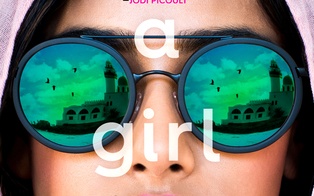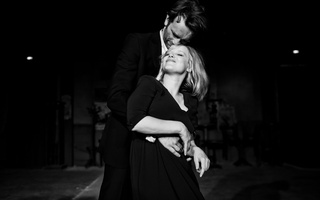When I first picked up “War and Peace” by Leo Tolstoy, I never expected the surprise I was about to receive. I knew it was considered an excellent classic novel, but I also expected it to be full of boring, dense paragraphs that I would be unable to understand unless I were suddenly to become philosophically inclined. However, by the time I reached the end of this novel, I had to pause and reflect on the masterpiece I had just finished. While “War and Peace” tells the story of five families in the Russian nobility in Moscow and St. Petersburg during the Napoleonic Wars, it is not just the story of a specific set of characters in a specific period of time at a specific place. Rather, “War and Peace” is the story of what it is to be human. It is the story of humanity’s many tragedies, joys, anxieties, dreams, and questions. Chronicling the human experience is no small feat, but Leo Tolstoy achieves this lofty goal in a book full of meaning, emotion, and beauty as its characters search for truth in a confusing world.
While “War and Peace” addresses weighty subjects, it begins slowly, patiently introducing its many characters. They are mostly from five noble families: the Bolkonsky family, whose central characters are Andrei and Marya; the Rostov family, whose central characters are Natasha and Nicolas; the Bezukhov family, whose main character is Pierre; the Kuragin family, whose main characters are Vasily, Ellen, and Anatole; and the Drubetskoy family, whose only two members are Anna and her son, Boris. Over the span of seven years, from the beginning of the Napoleonic Wars in 1805 to Napoleon’s final defeat in 1812, the book catalogues both Russia’s evolution as the war eventually comes to its front and the families’ evolution as their members grow both in age and experience. Andrei Bolkonsky, Nicolas Rostov, and Boris Drubetskoy offer one kind of perspective, as they initially seem to relish the activity and excitement of going off to war and eventually have to come to terms with the horrors of being surrounded by death. However, “War and Peace” is so familiar because it also tells the stories of characters left at home such as Natasha Rostov and Pierre Bezuhov, who are left to navigate a different kind of difficulty as they face social stigmas, betrayals, and the unknown fate of their loved ones. The toll of these different kinds of difficulties eventually become clear through the eyes of Andrei Bolkonsky and Pierre Bezuhov, who both question the meaning of life and search for answers in very different places as the novel progresses.
With such a large set of characters, to come up with a quick summary of the novel is difficult, as each character faces distinct trials and questions. Perhaps the best way to characterize “War and Peace” would be to describe it as a novel of duality. Just as it shows the duality between war and peace—two contradictory concepts that can exist simultaneously—the whole novel depicts the comparison between good and evil, beauty and ugliness, and life and death, and characters such as Andrei and Pierre, Natasha and Ellen, and the Emperor Alexander and Napoleon Bonaparte. The fact that two different things can be simultaneously present, such as the fact that Ellen is considered beautiful despite her cruel heart or that Pierre, who by nature is kind and helpless, can be considered to live an dissipated lifestyle by his contemporaries, is descriptive of both Russian society and reality despite the human tendency to try to simplify the complexities of life. By acknowledging the complexities, only then can we begin to see the truth, as the novel seems to indicate.
While Tolstoy’s style may help to make this novel revelatory, the aspect that elevates “War and Peace” to greatness is the fact that it is a novel about universal love. Often viewed as a conventional love story due to its many romances and marriages, “War and Peace” searches for something much deeper: A kind of love that eclipses and includes all kinds of love. As Andrei or Pierre begin to face death all around them, they serve as the vessels for this search as they refuse to accept that life has no meaning but ultimately find meaning in a transcendent love. Thus, we see Prince Andrei never truly come to life until he has that love close to the point of death, and Pierre’s life begin when he realizes this as well. The novel shows that accepting this idea of universal love is the ultimate path to peace and greatness, much better to attain in everyday life than the greatness Napoleon was trying to gain through war.
Love, life, and death are all seemingly intertwined in a special way in this novel, and while I felt the losses heavily, I can acknowledge the beauty found in the love revealed by these losses. The matters Tolstoy addresses on life’s meaning and purpose are a part of everyday life, and reading this novel forced me to truly think about my own perspective on these deeper questions. “War and Peace” is a deep, complex, and even tragic novel, but it offers hope and a promising message in spite of all the losses, just as one would hope to have in life.
—Staff Writer Marianne T. Aguilar can be reached at marianne.aguilar@thecrimson.com.
Read more in Arts
Artist Spotlight: Sara MelsonRecommended Articles
-
Sundays and CybeleSerge Bourguignon's Sundays and Cybele is a simple, exquisite film about the loneliness of three people. Acted with nearly miraculous
-
Radcliffe Fellow Talks Novel, Nuances of Sri Lankan PoliticsRadcliffe Institute fellow V.V. Ganeshananthan ’02 discussed the process of writing her upcoming novel about Sri Lankan politics on Wednesday afternoon.
-
'War, So Much War' a Catalan Master Novelist's Grown-Up Fairy TaleIn her novel "War, so much War," the late Catalan writer Mercè Rodoreda successfully weaves an intricate allegorical examination of evil, both beautiful and disturbing, without the simplistic moralizing of many fairy tales.
-
 'A Girl Like That' Demands a Redefinition of Girlhood and Romance
'A Girl Like That' Demands a Redefinition of Girlhood and Romance -
 From Cannes: ‘Zimna wojna’ (‘Cold War’) a Bleak Love Story
From Cannes: ‘Zimna wojna’ (‘Cold War’) a Bleak Love Story













